MOORESVILLE, N.C. — The mystery began more than two years ago with a pea-size lump behind the left ear of Susan Wind's oldest daughter, Taylor, then 16.
A doctor told them it was "nothing to worry about," likely triggered by teenage hormones. But Wind was unconvinced, and eventually, through testing, Taylor was diagnosed with papillary thyroid cancer, which is less common in children and would require surgery.
The journey to restore Taylor's health would lead to Wind uncovering an anomaly lurking in Mooresville, a fast-growing lakeside suburb of Charlotte: On Wind's street alone, three people had thyroid cancer, while two others had thyroid tumors, she learned.
As she began tracking case after case in her community, Wind believed that what she was seeing was no coincidence, and that something in the environment could be to blame.
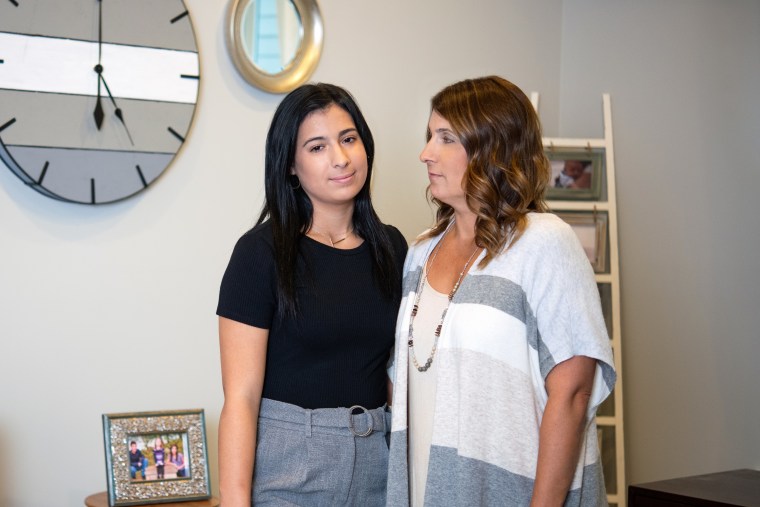
Wind raised $110,000 to get a team of scientists from Duke University in Durham to test the groundwater, soil and air, and collect information from residents in the hope of identifying a possible connection. The full report is still months away, but what researchers find could provide a breakthrough for what's happening here.
In 2018, as part of an analysis of the state's cancer registry data, the Iredell County Health Department confirmed that two ZIP codes in the Mooresville area, including one where the Wind family lived, had 110 observed cases of papillary thyroid cancer from 2012 to 2016 — more than double the number expected.
"I want to know why everyone is getting cancer, and what do we all have in common," Wind, 46, said.
Mooresville isn't the only community in which residents unnerved by seemingly unusual cancer rates are struggling to find answers. About 1,000 suspected cancer clusters — places in which a higher than normal type of cancer is concentrated — are reported to state health departments each year, according to the American Cancer Society. But studying them is challenging, with results often inconclusive, dubious or failing to meet the right criteria to satisfy various health agencies.
About 13 percent of more than 560 suspected cancer clusters examined in the United States from 1990 to 2011 were considered "confirmed" in a 2012 study by Emory University epidemiologists.
The Centers for Disease Control and Prevention gathered public input last summer for how health departments can best respond to possible cancer clusters. (Updated guidelines are expected to be released in 2021.)
Those who responded to the CDC expressed an urgency to investigate potential cancer clusters that have not yet been confirmed. Among them were an Indiana woman whose 13-year-old was diagnosed with a brain tumor along with three other children within a one-block radius; a New York woman being screened for cancer and whose friend and dog a few blocks away had been diagnosed; and another commenter who did not give a location but said they regretted moving to a place that they later learned was home to a potential cancer cluster.
Andrew Olshan, an epidemiologist at the University of North Carolina who co-authored recommendations last July on how to study the growing thyroid cancer rate in North Carolina, said requests should be scrutinized.
"It's extremely challenging for the state and the CDC and others to really go through this and say, 'Aha, we've found the cause of these cancer cases,'" Olshan said. "But they deserve answers on the off chance we can learn more."
The problem with cancer clusters
The federal government defines clusters as a "greater-than-expected number of cancer cases that occurs within a group of people in a geographic area over a period of time."
Determining whether it's mere chance or of pressing public concern can be a tall order for health officials.
Still, health experts say, there are general parameters: All of the cases in a cancer cluster must be the same type, the cancer must be limited to a specific area — for instance, a ZIP code or a workplace — and the diagnoses must have been confirmed within a given period. This accounts for the fact that some cancers can take years or decades to develop.
Health officials review cancer rates to see if the number is in fact higher than what is normally reported in that area. In addition, they note the demographics of the patients; that way they can find anomalies, like children diagnosed with a cancer that typically affects adults.
Studies however, can cost millions of dollars, according to Dan Fagin, the director of the Science, Health and Environmental Reporting Program at New York University.
"Health departments don't want to investigate because they're expensive and they often have ambiguous results and they can make people really upset," Fagin said.
The first two cancer cluster investigations in the United States to determine an association between high rates of cancer and environmental pollution were in a Boston suburb in 1984 where there was an outbreak of childhood leukemia, and in Toms River, New Jersey, where the rate of childhood brain and central nervous system cancers was three times higher than expected.
In his 2013 book, "Toms River: A Story of Science and Salvation," Fagin reported that 90 children, including some as young as 6 months old, were diagnosed with cancer in the town from 1979 to 1995.
A five-year, $10 million epidemiological study concluded the cancer was related to environmental pollution, but there was not enough evidence for officials to conclusively say that toxic chemicals from two nearby waste dumps had tainted the water supply to a level that compromised the community's health. But in 2002, the companies associated with the pollution, without acknowledging liability, settled in court with dozens of families.
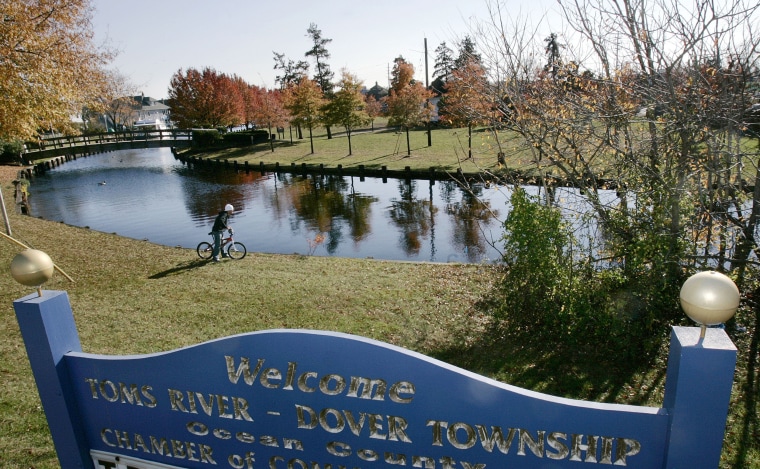
"You could think of Toms River as a fluke, but I think the most likely explanation is that Toms River is a warning," Fagin said. "Cluster investigations are like the fire marshal that comes into the house after it's already burned down. What we really need are fire inspectors who look for problems before they do their damage."
"Trevor's Law," which then-President Barack Obama signed in 2016, requires the federal government to track cancer clusters around the nation. President Donald Trump has approved the release of $1 million for the CDC to update its guidelines for how to conduct future investigations, although that's still another year away from completion.
Trevor Schaefer, an Idaho native who inspired the law after surviving childhood brain cancer, is frustrated with how slow progress has been.
"In the interim, a lot of children and adults have and will continue to get diagnosed with cancer and many will not survive," he said, "and those that do will forever face chronic health challenges."
A search for a source
When Wind, a cybersecurity consultant, shared her daughter's thyroid cancer diagnosis on social media, she was surprised to hear that others in Mooresville were going through a similar situation.
"I just started seeing all these people had cancer, which always lived in the back of my mind, 'Gosh, there's a lot of cancer here,'" Wind said. "But you don't know if it's here or everywhere."
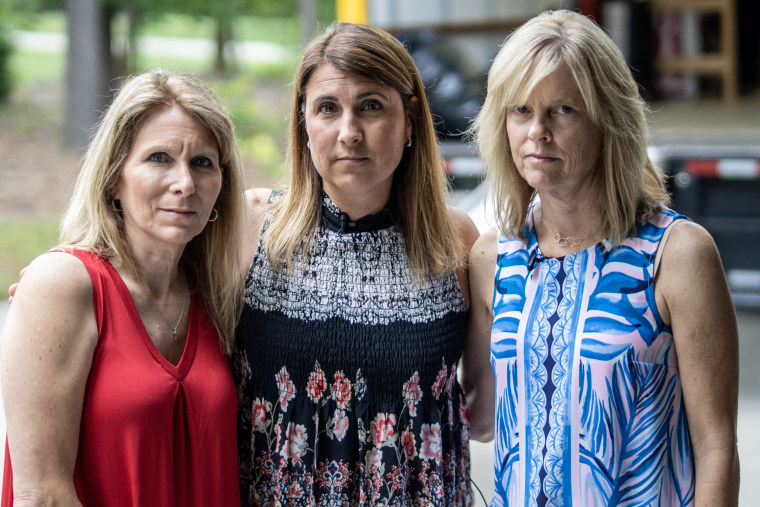
Thyroid cancer develops in the tiny, butterfly-shaped gland that regulates the body's metabolism, and while people of any age can get it, it is more commonly diagnosed in women in their 40s and 50s, according to the American Cancer Society. The cancer, if treated, has a 98 percent cure rate.
Doctors treating Taylor Wind's thyroid cancer at the Wake Forest Baptist Medical Center in Winston-Salem confirmed they had seen other cases of it in her area. They referred Wind to a Duke University chemist, Heather Stapleton, who told her an investigation was her best shot at getting answers — but she'd need at least $50,000.
Within months, Wind had organized a 5K fundraiser and collected more than double the minimum needed for the study.
The Iredell County Health Department had begun looking into cancer rates, including for thyroid, in late 2017 after a resident requested a report. The following spring, Wind caught the attention of officials when she spoke with local media about the seemingly high cases of cancers she had come across.
In June 2018, after analyzing the data, health officials confirmed what she was tracking anecdotally in their county of about 175,000 people: The state's cancer registry observed 191 cases of thyroid cancer from 2012 to 2016, almost double what was expected. Statewide, 11.6 thyroid cancer cases were diagnosed per 100,000 people, while in Iredell County the rate was 21.8 cases.
And in two Iredell County ZIP codes that include Mooresville, where officials expected about 46 cases of thyroid cancer, they observed 110 cases.
State health officials, however, make clear that the numbers don't identify a source for the higher rate of cancer. Other factors exist: Does cancer run in the patient's family? Does the person smoke or have diabetes? Do they have access to health care and can get screened?
"Because cancer is common, cases might appear to occur with alarming frequencies within a community even when the number of cases is within the expected rate for the population," state health officials wrote in their assessment.
Iredell County officials also point out that thyroid cancer rates in general have been increasing throughout the state as well as across the country. In fact, the study also found 11 other counties in North Carolina with "significantly higher" rates of thyroid cancer.
Prominent cancer researchers in the publication "Cancer Epidemiology and Prevention" noted in 2017 that thyroid cancer, once relatively rare, is now the eighth most commonly diagnosed cancer among women worldwide — as access to testing becomes more common and available. For papillary thyroid cancer, which almost 90 percent of the cases in southern Iredell County fall under, the known risk factors are obesity and childhood exposure to certain radiation.
But that doesn't mean those are the only possible causes. Research suggests there could be a relationship between the increased risk of thyroid cancer and chemicals found in flame retardants, which are used in building materials and other household products, and radon, a naturally occurring radioactive gas that is the second-leading cause of lung cancer behind cigarette smoking.
The presence of coal ash
On the edge of Lake Norman, the largest man-made lake in North Carolina, two power plants jut out near Mooresville: the McGuire Nuclear Station and the coal-fired Marshall Steam Station, both owned by one of the largest energy companies in the country, Duke Energy.
State health officials have found no evidence of increased radiation coming from the nuclear plant. The Marshall station, meanwhile, produces coal ash as a byproduct of powering the facility.
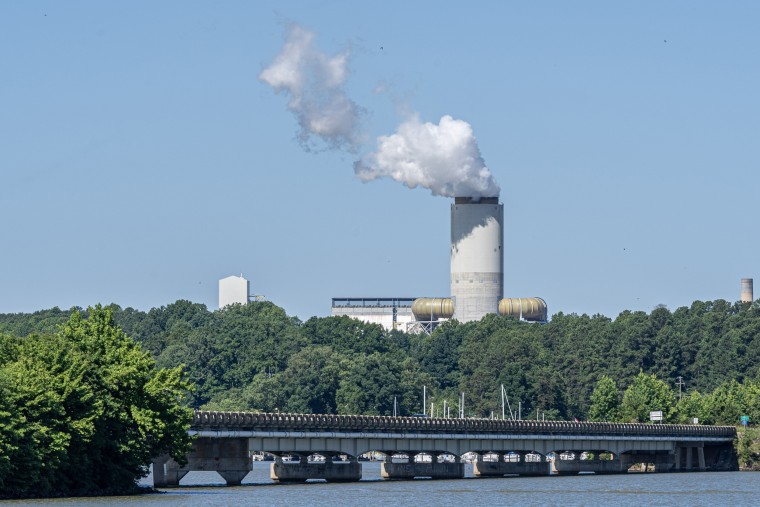
Duke Energy, with 7.7 million electric customers across six states, stores 21 percent of its coal ash in North Carolina at Marshall, according to the utility. That includes about 16.8 million tons in an unlined basin — a practice dating back decades when the storage method was the industry standard.
Coal ash contains "contaminants," according to the Environmental Protection Agency, including mercury, lead and arsenic, and that "without proper management, these contaminants can pollute waterways, groundwater, drinking water and the air." (There is no link between coal ash contaminants and those in flame retardants or radon.)
In 2018, the state Department of Environmental Quality determined that 1 million cubic yards of coal ash had been used to fill in roads and commercial development projects in Mooresville from 1995 to 2001 — more than in any other area of the state.
Despite concerns about the presence of coal ash, which contains heavy metals, a state Department of Health and Human Services report in January 2019 that examined thyroid cancer rates in Iredell County found that there are "no published studies to support an association between coal ash exposure and thyroid cancer."
Still, Olshan said that "rigorous epidemiologic studies" would help to provide evidence that could support or refute an association.
Under the Trump administration, rules for the disposal of coal waste have been relaxed, a move assailed by groups such as the Southern Environmental Law Center, which has battled in court for major utilities to clean up coal ash sites and protect drinking water.
"We know that coal ash is nasty stuff, and we believe that it's a fiction propagated to say it's just like soil," D.J. Gerken, a senior attorney at the center, said.
In North Carolina, environmental officials last year ordered Duke Energy to remove the coal ash from unlined storage basins at six sites statewide, including at Marshall. The company had initially appealed that process, but announced on Thursday it has settled with the state as well as groups represented by the Southern Environmental Law Center to permanently close the basins and excavate most of the coal ash to on-site lined landfills. The amount to be moved is nearly 80 million tons of coal ash — making it the largest cleanup of its kind in U.S. history, the state said.
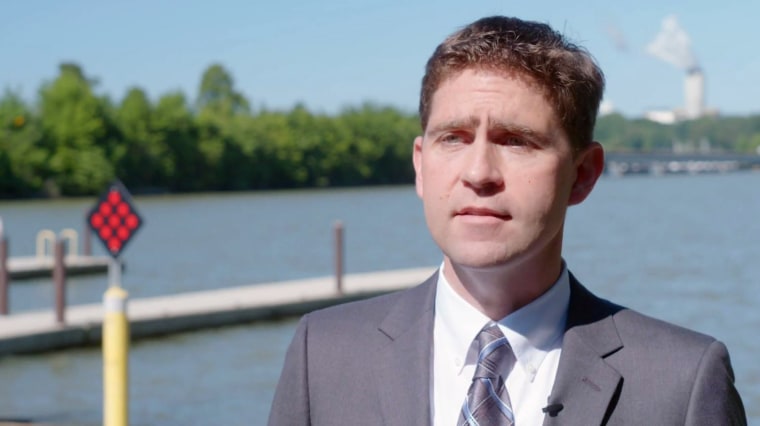
"It took years of litigation to get here, but today's settlement finally faces up to the reality that there is no safe way to leave coal ash in an unlined pit contaminating groundwater," Gerken said. "The work Duke will now start to safely excavate coal ash from coal ash pits at plants like Marshall should be the national standard."
At Lake Norman, which borders four counties, Duke Energy says decades of testing surface water and fish have shown the lake is safe from coal ash and that hundreds of monitoring wells around Marshall's coal ash basin show no private drinking wells have been affected.
"We operate under incredibly strict permits that are designed to protect public health and the environment," spokeswoman Paige Sheehan said.
A Duke University study in 2015 found levels of radioactivity in samples of coal ash from the largest U.S. coal-producing basins — the Illinois, Appalachian and Powder River basins — five times higher than in normal soil. The study did not test the coal ash near Lake Norman. Humans are regularly exposed to radioactivity — from outer space or emitted from certain foods or from X-ray exams — but scientists say it typically takes a large amount of exposure and a direct dose for a thyroid tumor to develop.
A previous report by the federal government on coal ash found it is not significantly enriched in radioactive elements. Lisa Bradley, a toxicologist with the firm Haley & Aldrich and consultant for Duke Energy, said it would take long-term ingestion or inhalation of the compounds in coal ash to cause cancer.
Despite the numbers showing a higher rate of thyroid cancer in Iredell County, health officials in North Carolina have not designated it as a cancer cluster, saying there still needs to be more research into the people getting cancer, when they were diagnosed and where they have lived over time.
Gosh, there's a lot of cancer here ... You don't know if it's here or everywhere."
The difficulty about clusters is that "they can appear or disappear depending on the parameters used," said Kelly Haight Connor, a Department of Health and Human Services spokeswoman.
Susan Wind would like for the study by Duke University researchers to ease people's concerns, and said that if it helps to rule out a potential environmental cause for the rise in cancer, even better.
In July, North Carolina Gov. Roy Cooper, a Democrat, signed a bipartisan bill co-sponsored by state Sen. Vickie Sawyer of Iredell County that directs researchers at the University of North Carolina at Chapel Hill to create a panel to review statewide cancer data and identify potential cancer clusters.
After a first meeting in December of the state's Cancer Research Advisory Panel, members will focus on the release of a report in April that would help define what a cancer cluster is and figure out how to best appropriate money to do further studies in places such as Mooresville that will take into account several factors, not just possible environmental sources.
'Running into a brick wall'
Wind and her husband, David, a financial crime investigator, moved to Mooresville in 2012, drawn to the postcard view of Lake Norman and a dream home built on a cul-de-sac. Quaint brick buildings line downtown Main Street. A sign outside McDonald's says, "God bless our police."
Mooresville, with about 38,000 residents, is home to the headquarters of Lowe's Home Improvement and a Donald Trump-owned golf club that opened almost eight years ago.
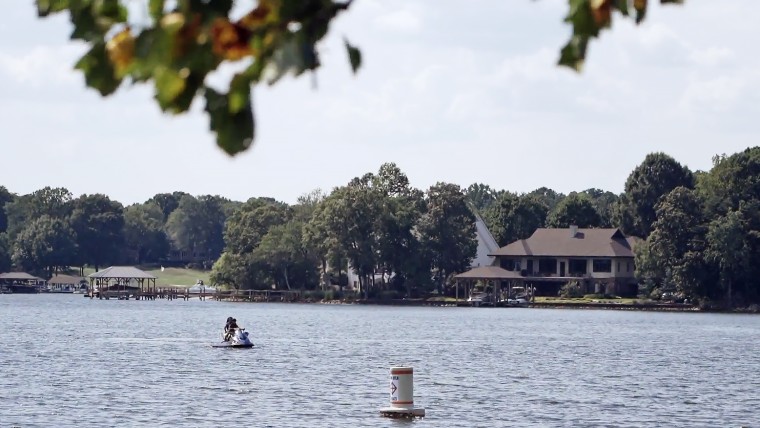
The exclusive fairway and the sprawling mansions that surround it on Lake Norman are in one of the ZIP codes that has seen a higher than expected rate of thyroid cancer.
Miles Atkins, Mooresville's mayor, said some residents don't want to talk about the possibility of a cancer cluster because they are not personally affected or are anxious about what it could do to their property values.
Atkins credits Wind for being resourceful despite the skeptics, and compelling officials to revisit and analyze the data.
"Susan found that she was running into a brick wall when she was trying to deal with the state," Atkins said. "So when she got us involved, we started asking: 'Well, why does it take so long to get this data? Who's doing any data analytics to interpret what the data is saying? And why hasn't anybody brought this to our attention until it took a mother whose daughter had thyroid cancer?'"
In response to why the state had not told the community about the high rate of thyroid cancers earlier, state health officials said they can't proactively find trends from state cancer registries, instead counting on the public's help.
While they wait for the Duke University study to be released, the Winds sold their home in Mooresville last year and moved with their two youngest children to Florida, where Taylor, now 19, is in college studying nursing. Taylor learned in September that her cancer is in remission after surgery in 2017 to remove her thyroid gland, but she must take medication for the rest of her life.
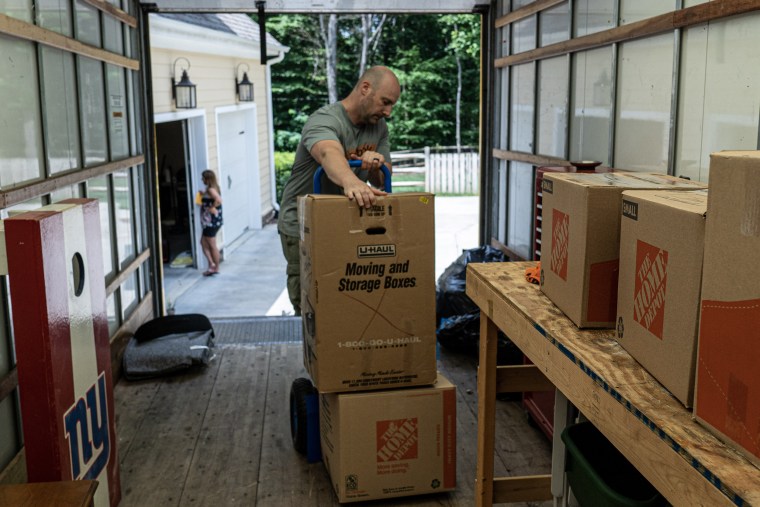
She said she worries that "people don't really see things until it happens to them."
Wind can't shake the guilt she feels that she didn't realize the cancer in her community sooner and wasn't able to protect her daughter from falling ill. But the experience did impart something invaluable: She learned how to be an advocate.
"It's so sad that the moms who have kids with cancer are the ones that are raising money for studies," she said. "They're the ones that are finding the problems or the links. They're the ones asking the questions, and they're the ones stepping up when others are still in denial."

